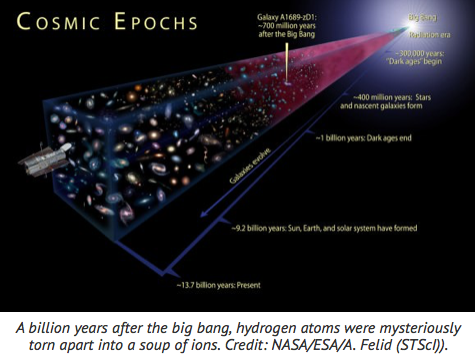
Astronomers observed the most distant Supermassive Black Hole (SMBH) ever detected! The observation was made using the Wide-field Infrared Survey Explorer (WISE) and the Magellan Telescopes. The SMBH weighs about 800 million times the mass of the Sun and is located more than 13 billion light years from Earth, i.e., it was formed only 690 million years after the Big Bang! Scientists managed to measure its distance with great accuracy by obtaining the spectrum of the source!! They measured how much the wavelength of the source’s light is stretched by the expansion of the Universe (Doppler effect) and then they inferred how far it had to travel to reach us.
The SMBH, named ULAS J1120+0641, belongs to a class of Active Galaxies (AGN), called quasars. Quasars are the most luminous galaxies in the Universe. The distance and mass of ULAS J1120+0641 challenges current theoretical models that study the formation of SMBHs. The mechanism that would allow a black hole to grow so big so early in the Universe is a mystery (but read here and here).
Future missions, like ESA’s Euclid mission and NASA’s Wide-field Infrared Survey Telescope (WFIRST) are expected to observe more objects like ULAS J1120+0641. This will allow us to shed light on the mechanism(s) that feed SMBHs and study the conditions of the early Universe!
Publication: Bañados et al. 2017
Source: Universe Today
